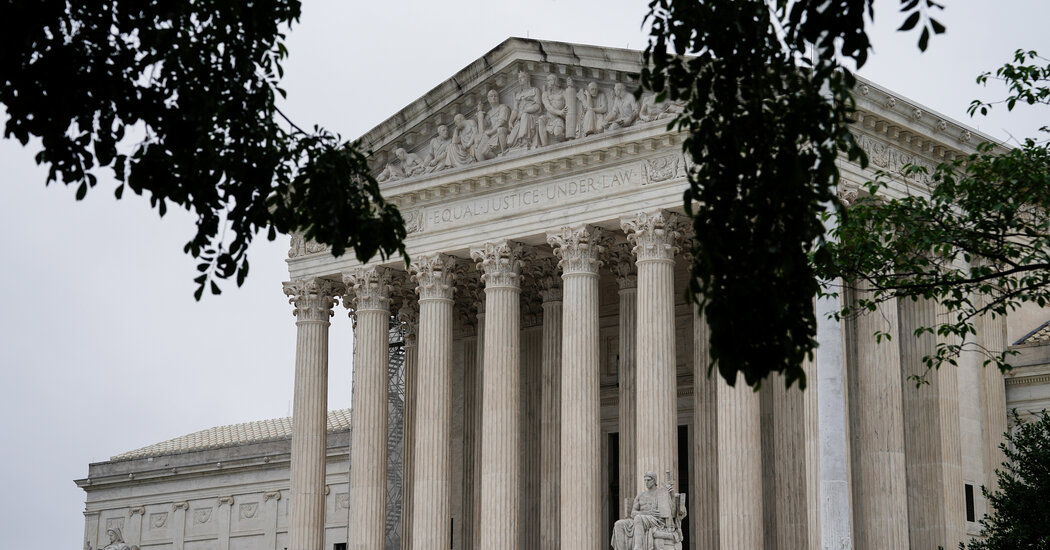After the Supreme Court ruled last week that a Colorado graphic designer has the right to refuse to create websites for same-sex marriages, critics of
After the Supreme Court ruled last week that a Colorado graphic designer has the right to refuse to create websites for same-sex marriages, critics of the decision raised questions about a form included in court papers in the case that appeared to show that a gay couple had sought the services of the designer, Lorie Smith.
The man who supposedly submitted the form said he was unaware of its existence until a reporter for The New Republic called him. He is, moreover, straight, married to a woman and a supporter of gay rights. The apparent falsehoods, critics said, undermined the court’s decision.
What is known about the request?
It was apparently submitted on the website of Ms. Smith’s company, 303 Creative, on the afternoon of Sept. 21, 2016, the day after she filed suit in federal court in Colorado to challenge an aspect of the state’s anti-discrimination law. She said in the suit that the law violated the First Amendment by forcing her to espouse beliefs at odds with her faith.
The lawsuit was the subject of news coverage and may have prompted the submission.
The form was said to have been filled out by someone named Stewart, and it included a real email address and phone number. “We are getting married early next year and would love some design work done for our invites, placenames etc.,” Stewart wrote, saying his partner was named Mike. “We might also stretch to a website.”
It is undisputed that Ms. Smith never followed up on the request. But she later mentioned it in court papers, apparently to suggest that her case was more than hypothetical.
What did the parties tell the Supreme Court?
Ms. Smith’s lawyers devoted a sentence to the matter in their main brief. “Despite Colorado barring Smith from publicizing her wedding services,” they wrote, “she has already received at least one request for a same-sex wedding website.” There followed a page citation to a large appendix of earlier filings jointly submitted by the parties, which included the form.
In their main brief in the case, lawyers for Colorado said the form was irrelevant to the court’s decision.
“The company” — a reference to Ms. Smith’s firm — “claims that, after it sued, it received a ‘request for a same-sex-wedding website,’” the brief said. “But the ‘request’ referred to by the company was not a request for a website at all, just a response to an online form asking about ‘invites’ and ‘placenames,’ with a statement that the person ‘might also stretch to a website.’”
“The company did not respond to that online form,” Colorado’s brief said. “Nor did the company take any steps to verify that a genuine prospective customer submitted the form.”
Lawrence Pacheco, a spokesman for Phil Weiser, the state’s attorney general, said Colorado’s brief had noted that the request was problematic. “We raised the fact it was not a real request,” he said.
In an interview last year, Mr. Weiser focused on what he said was the larger question in the case: a lack of a meaningful record.
“This is a made-up case,” Mr. Weiser said. “There haven’t been any websites that have been made for a wedding. There hasn’t been anyone turned away. We’re in a world of pure hypotheticals.”
What did the Supreme Court say about matter?
Neither the majority opinion nor the dissent mentioned the supposed request or appeared to give it any weight.
Justice Neil M. Gorsuch, writing for the majority on Friday, summarized approvingly an appeals court ruling that said Ms. Smith and her company had established standing to sue because they faced a credible fear of punishment under a Colorado anti-discrimination law if they offered wedding-related services but turned away people seeking to celebrate same-sex unions.
In dissent, Justice Sonia Sotomayor did not discuss the request or the standing question.
What do Lorie Smith’s lawyers say?
“Whether it was genuine or whether it was a troll, we don’t know,” Kristen Waggoner, the president of the Alliance Defending Freedom, which represents Ms. Smith, said in an interview.
Investigating the question would have been legally perilous, Ms. Waggoner said. “If Lorie followed up,” she said, “Colorado had already held that they would prosecute her for violating the law.”
Ms. Waggoner said critics should focus on what the court decided. “They should criticize the ruling based on its substance rather than perpetuating falsehoods about the case,” she said.
What does Stewart say?
“Nobody connected with this case has ever reached out to me to attempt to verify the information contained in the court filings as correct,” Stewart said on Monday, asking that his last name not be used. He added that he was “disappointed with the Supreme Court’s ruling and the implications for the L.G.B.T.Q.+ community.”
What happens next?
Mr. Pacheco, the spokesman for the Colorado attorney general, said his office “is evaluating whether additional action is needed.” But there is little reason to think that the Supreme Court, which did not appear to rely on the request, would be open to reconsidering its ruling based on the recent revelations about it.
www.nytimes.com
